How to Improve Your Local SEO

Consumer habits have shifted as a result of COVID-19. While the shift to digital was already taking place, COVID-19 expedited it. And this digital-first world has fundamentally changed consumers’ shopping habits. Rather than making an intent-based decision to go shopping, discovering new products and services is now integrated into daily life. You must account for every consumer interaction with your brand or business, everywhere they are, and in order to boost your business’s online visibility to appear for relevant searches and be discovered through relevant content, you must optimize your local SEO strategy.
So what exactly is local SEO? It’s a set of strategies and tactics used for competing well in local search. In order to boost your local SEO efforts, your business must focus on both onsite and offsite SEO, since they both have a symbiotic relationship with each other.

Onsite SEO: The process of marking your website search engine friendly. (left)
Offsite SEO: Activities that you and others do outside of your website to increase online visibility in relevant search results. (right)
The higher you rank in the local search engine results page (SERP), the better. After all, the Google 3-Pack — the platform’s method to display the top three local search results — is the new battleground in local SEO. Google is where consumers go when they have a defined need and are ready to make a purchase. And while ranking high on Google and increasing online visibility is a main priority for many multi-location marketers, improving local SEO is easier said than done.
Throughout this guide, we’ll take you through the top 10 things you should be focusing on with local SEO to increase online visibility now.
1. Look Into Google’s Ranking Factors
IS YOUR BUSINESS RANKING HIGH ENOUGH ON GOOGLE?
Google’s ranking factors are a good place to start when it comes to where you should be focusing your local SEO efforts. Google has a help page1 that is occasionally updated that explains how the search engine breaks down its ranking factors. While it’s important for your business to meet Google’s ranking factors, it’s also crucial to pay attention to other conversion factors like high-quality photos, reputation management, and more that will make consumers choose you over high-ranking competitors.
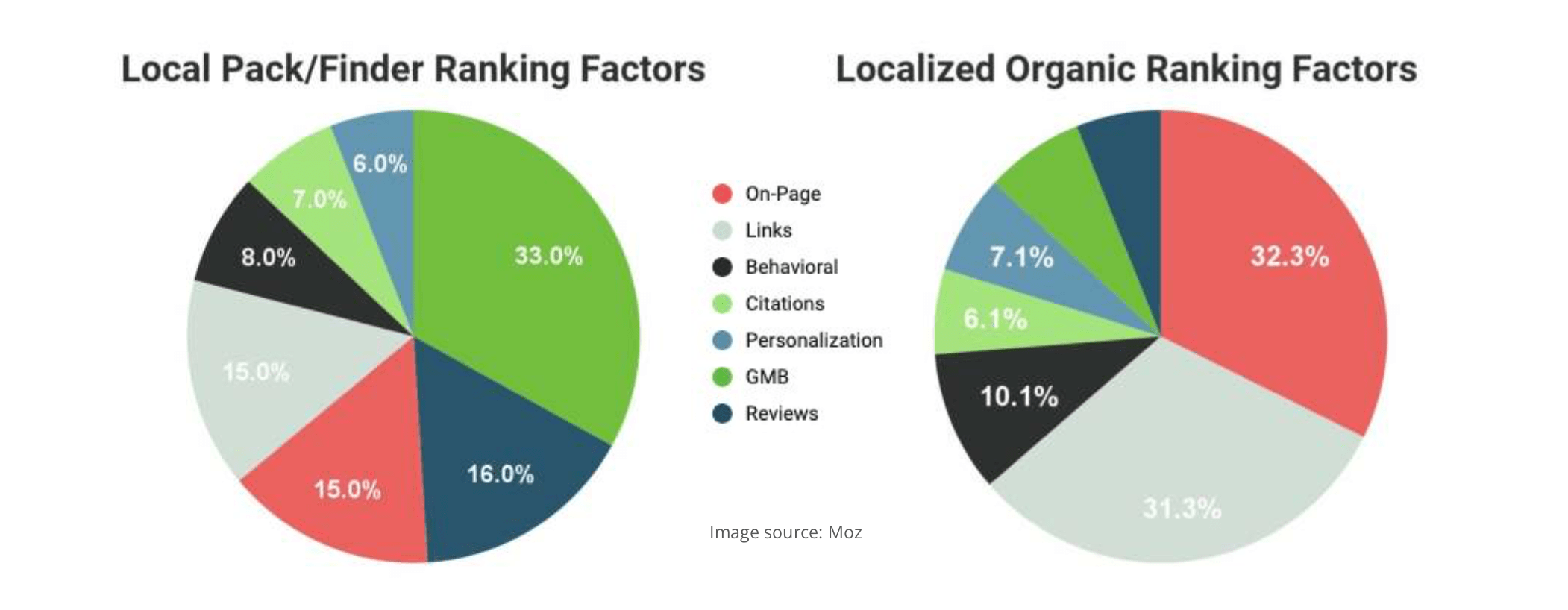
In search, the ultimate success metrics are inclusion and rank within the highly coveted, but limited, Google 3-Pack. It’s where most localized search commerce happens. To gain visibility in the Google 3-Pack, your multi-location business must improve its local SEO efforts.
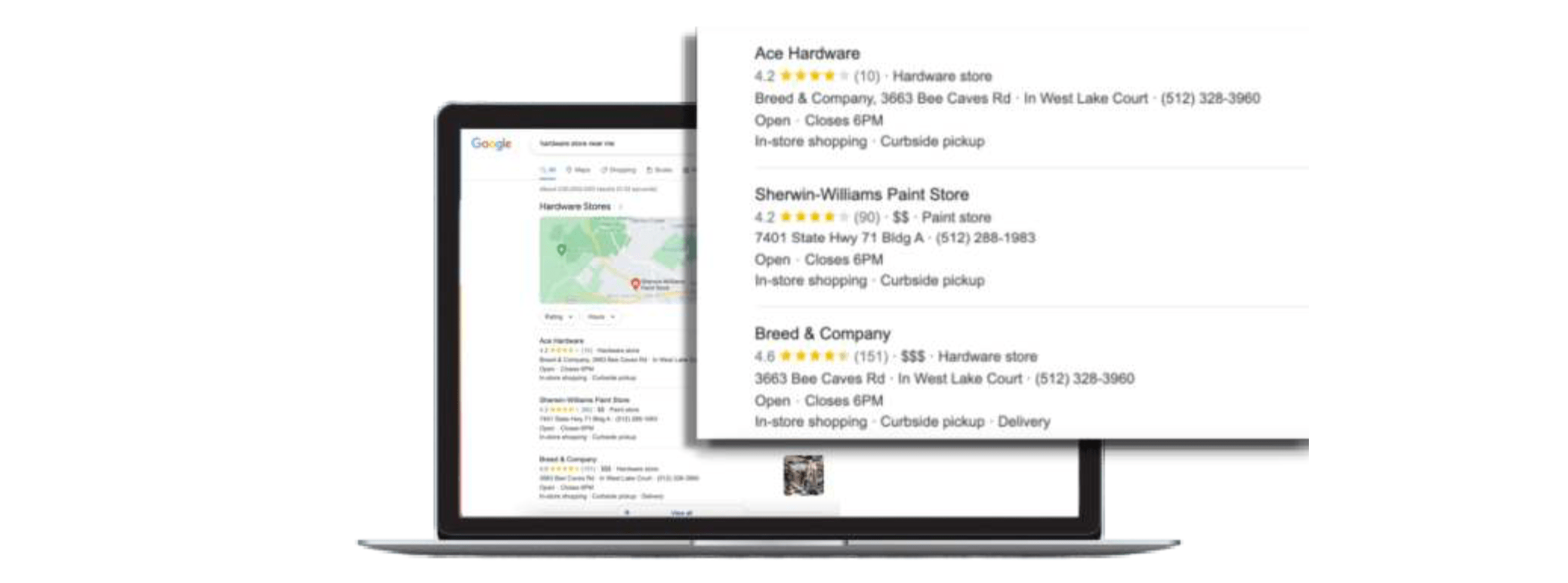
Example of the Google 3-Pack
2. Claim and Update all Local Listings
HOW LISTINGS CONTRIBUTE TO A WINNING SEO STRATEGY
When it comes to local listings, where should your multi-location business be focusing its efforts? Google’s ranking factors highlight that local listings are not as important as they once were. While this doesn’t mean that you should place less emphasis on listings, your business should be more cognizant of which sites are most worth your efforts. For instance, your business should claim and optimize local listings across all major search platforms, including Google My Business (GMB), Facebook, and Yelp. It’s also important to remember other secondary platforms that may be relevant to your industry – such as Apartments.com, Apple, Bing, or Foursquare.
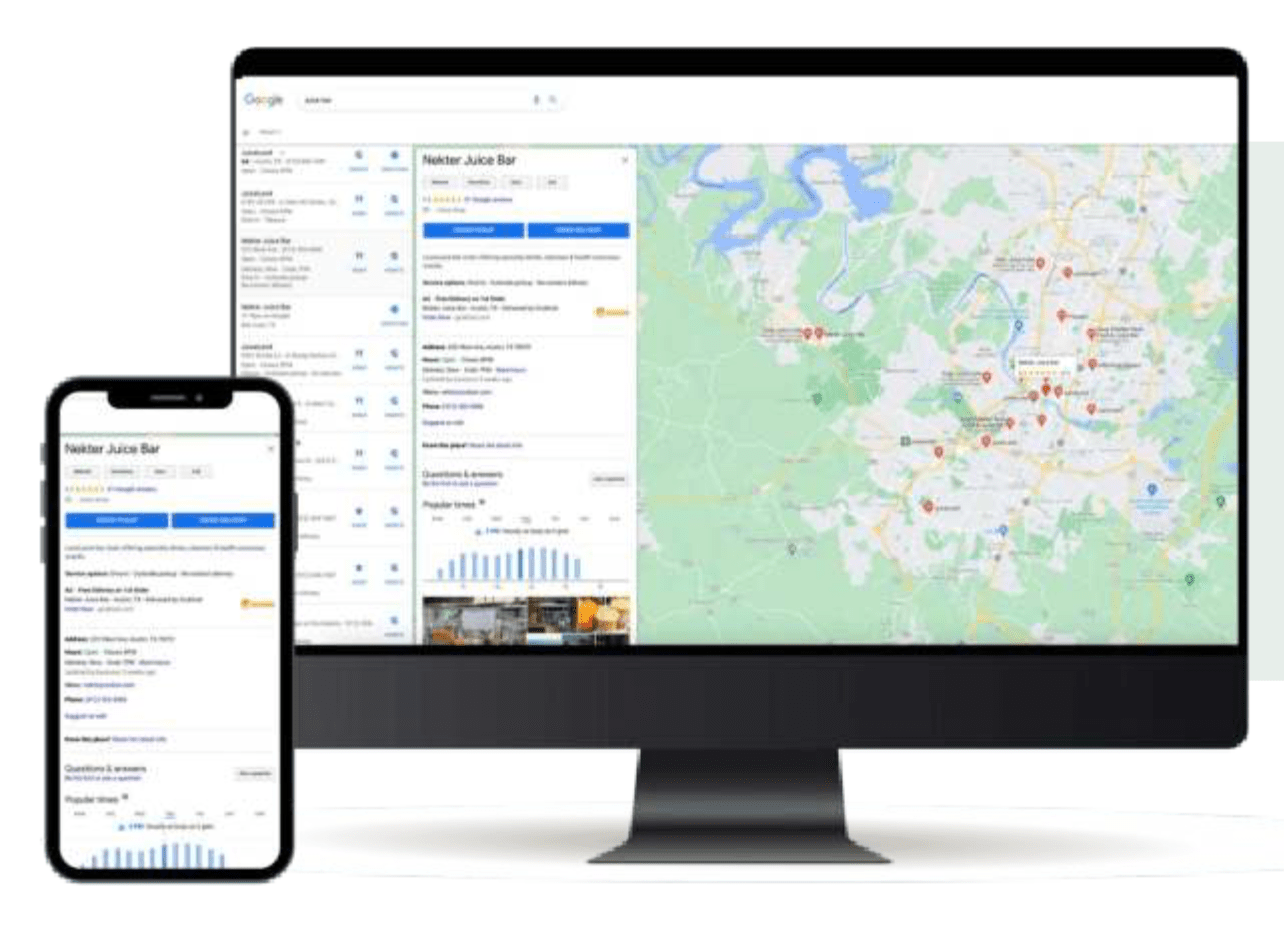
Example of Local Listing
When optimizing local listings, your multi-location business must:
- Claim all local listings across top search and social sites.
- Ensure all of the information found in your listings is updated and accurate
- Include as much information about your business as possible. The more a consumer can find about your business, the better.
- Leverage opportunities for differentiation that are specific to your business type, such as categories, attributes, and URLs for ordering or appointment booking.
- List all products and services your business offers.
3. Publish Quality Photos of Your Business
INCLUDING PHOTOS IN YOUR GMB PROFILES IS A MUST
Currently, most photos in GMB are uploaded by Google users, and not by merchants. In fact, SOCi found that only 3.4 percent of photos in GMB come from merchants. A robust local photo strategy can be a big differentiator when looking for ways to stand out from the competition. Google is indexing photo content and gives businesses that include relevant photo content a higher ranking.
When choosing a photo for your local GMB profiles, consider the following:
- High-quality photos are a must.
- Photos of local team members, your local storefront, or local events are great.
- Consider updating your photos every quarter to show Google you’re active on GMB.
Below you’ll find an example of Sport Clips including images into their local GMB profiles. These images help Sport Clips rank higher on Google for relevant searches, and show a consumer what to expect when they visit one of their locations for a haircut.
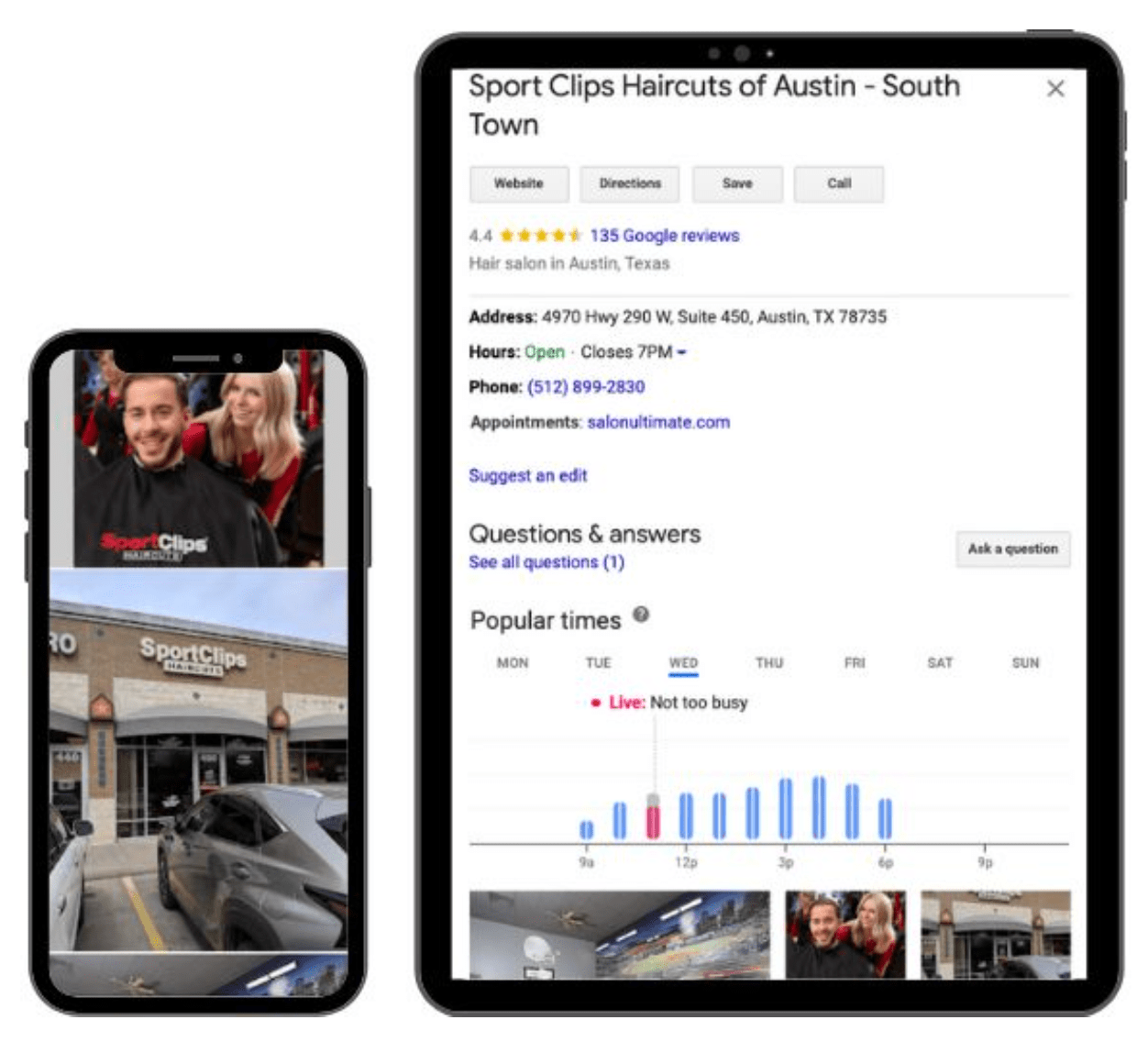
Example of High Quality Local Imagery Uploaded By Sport Clips!
4. Don’t Ignore Reviews – Responding is Key
REPUTATION MANAGEMENT CAN BUILD CONSUMER TRUST
Responding to reviews and managing your online reputation is a must to improve your local SEO efforts. Review diversity, review recency, and review quality are all signals that Google’s search algorithm considers. Google has also confirmed that responding to reviews also helps your multi-location business’s search ranking. Google states that businesses must “interact with customers by responding to reviews that they leave about your business. Responding to reviews shows that you value your customers and the feedback that they leave about your business.”
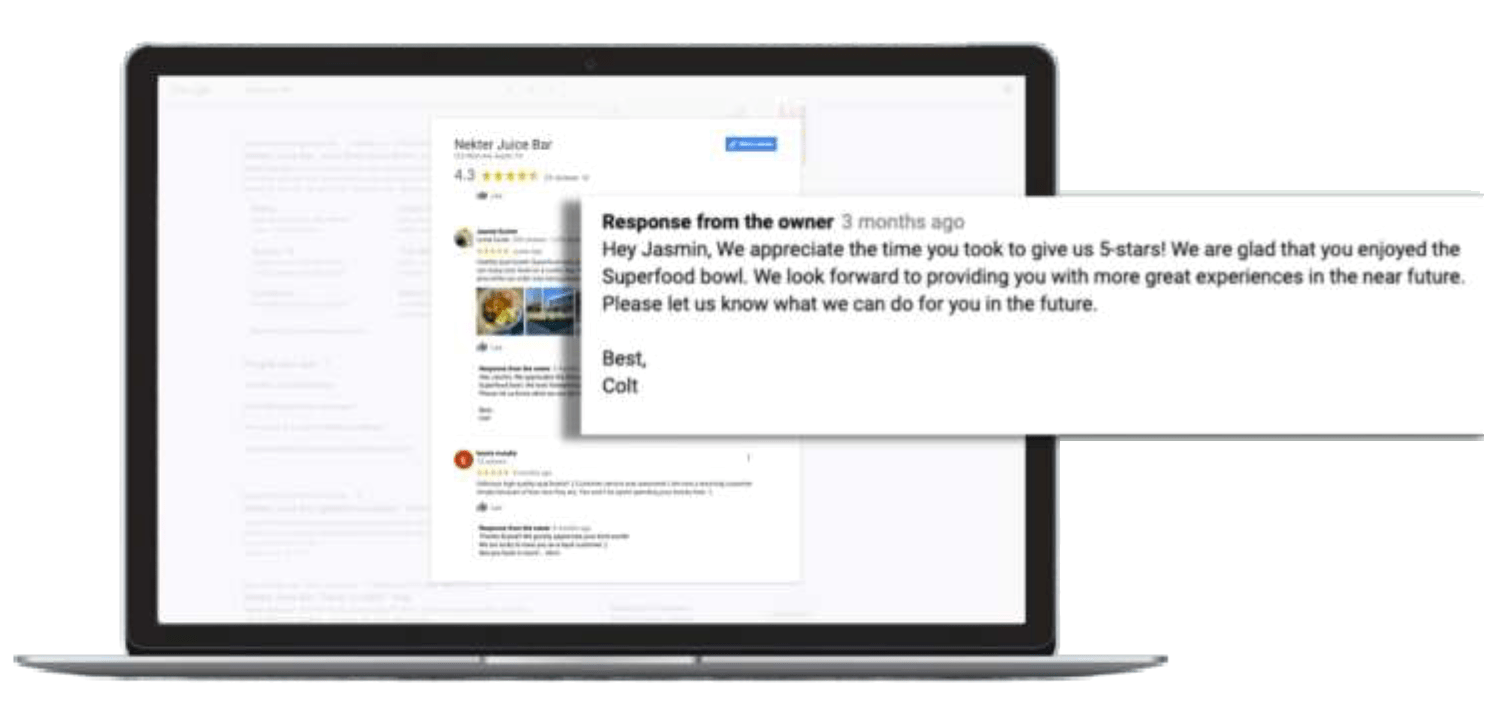
Example of the Nekter Responding to a Local Review
Our 2021 Localized Marketing Benchmark Report examined at what leaders in localized marketing are doing in terms of reputation management. On average, those studied in the report were responding to 31 percent of reviews received on GMB and 26 percent of reviews on Facebook. When responding to these reviews, businesses took an average of 39 days on GMB and 92 days on Facebook. Your multi-location business must meet or exceed these averages. And when it comes to responding to reviews, multi-location marketers must:
- Respond to reviews promptly, especially for the negative reviews!
- Personalize review responses.
- Improve key online reputation metrics – average star rating, review per location, and response time.
5. Develop a Google Q&A Strategy
IF YOUR BUSINESS ISN’T RESPONDING TO QUESTIONS, WHO IS?
The Importance of Answering Questions on Google Q&A
Google Q&A is a tool that allows Google users to ask and answer questions about a business online, and it has steadily grown in usage since it was launched in 2017. SEO experts can’t agree if Google Q&A directly impacts ranking; however, it’s still a valuable section that should be optimized. As with most features in GMB, it’s an excellent opportunity for conversion. It’s a place for multi-location businesses and consumers to engage and for the locations to showcase why they are superior to their competitors.
If your multi-location business isn’t using Q&A and answering questions received, someone else can and will. This means you run the risk of having a question answered incorrectly, and you are no longer controlling the narrative around your brand. Ensure corporate and local teams are on the same page about who is responsible for responding to the questions and what is expected for response time.
Pro Tip:
Your business can analyze all of the questions it has received and analyze the most frequently asked questions among consumers and potential consumers. You can then create a FAQ to answer all of those questions in one easy-to-find place on your website.
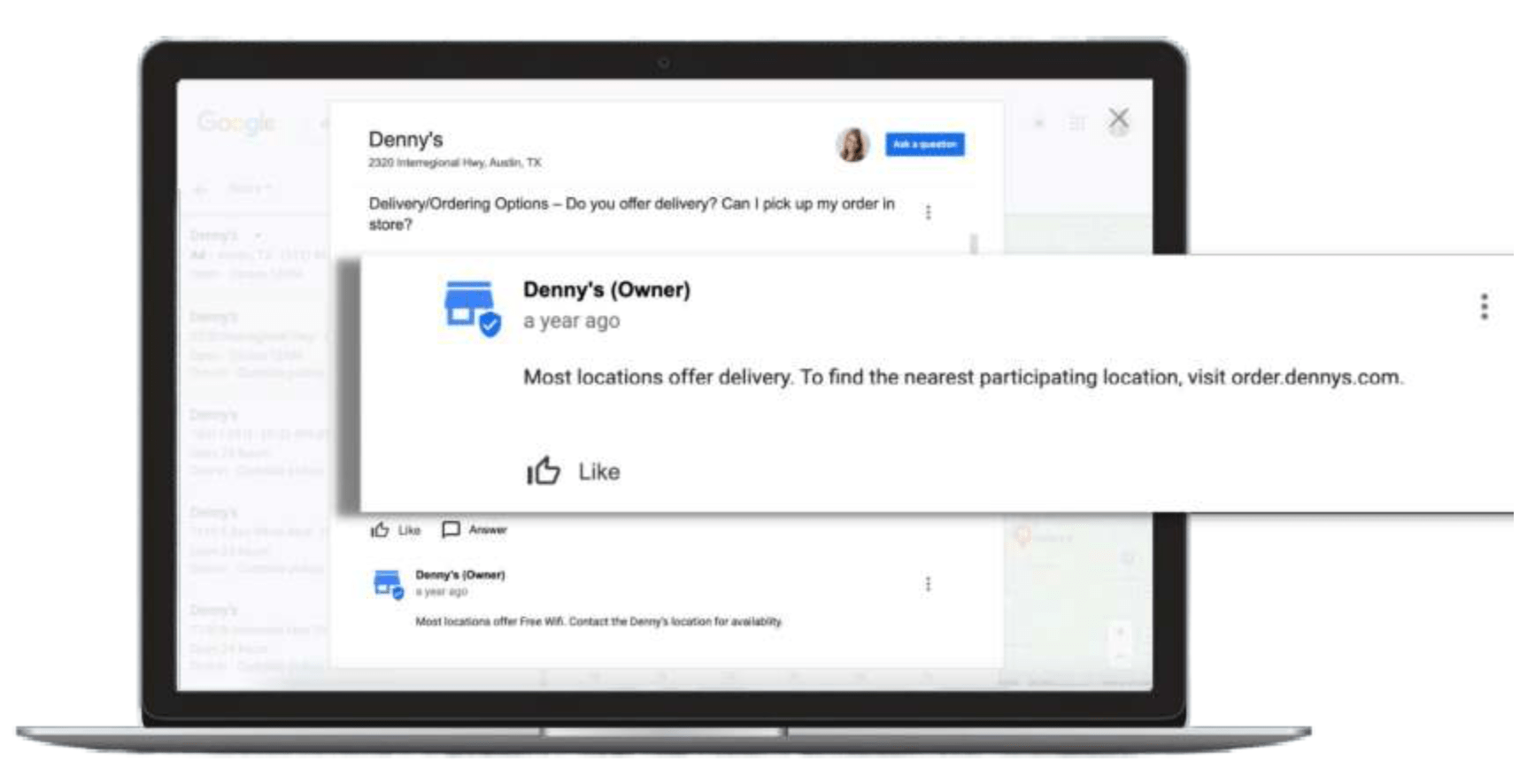
Example of a Company Responding to a Question Received on Google Q&A
6. Re-Evaluate Your Hours and Secondary Attributes
INCREASE YOUR ONLINE VISIBILITY WITH GOOGLE’S ATTRIBUTES
Local Listings Attributes
Local listings contain attributes that allow your multi-location business to provide more information about its offerings. Including as many attributes that are relevant to your business and industry as possible is key. The more information a consumer can get about your business without having to leave the local listing, the better! Attributes can be found in the “info” section of your GMB profile, and cover a wide range of topics such as the type of payment your business accepts to its accessibility or the safety precautions you’re taking.
Local Listings Secondary Hours
There’s also a section for secondary hours where your business can set specific hours that differ from your regular business hours. For instance, does takeout ordering close at 9 pm when your dining room closes at 10 pm? This is the type of information many consumers will be looking for, and again can help differentiate your business from the competition.
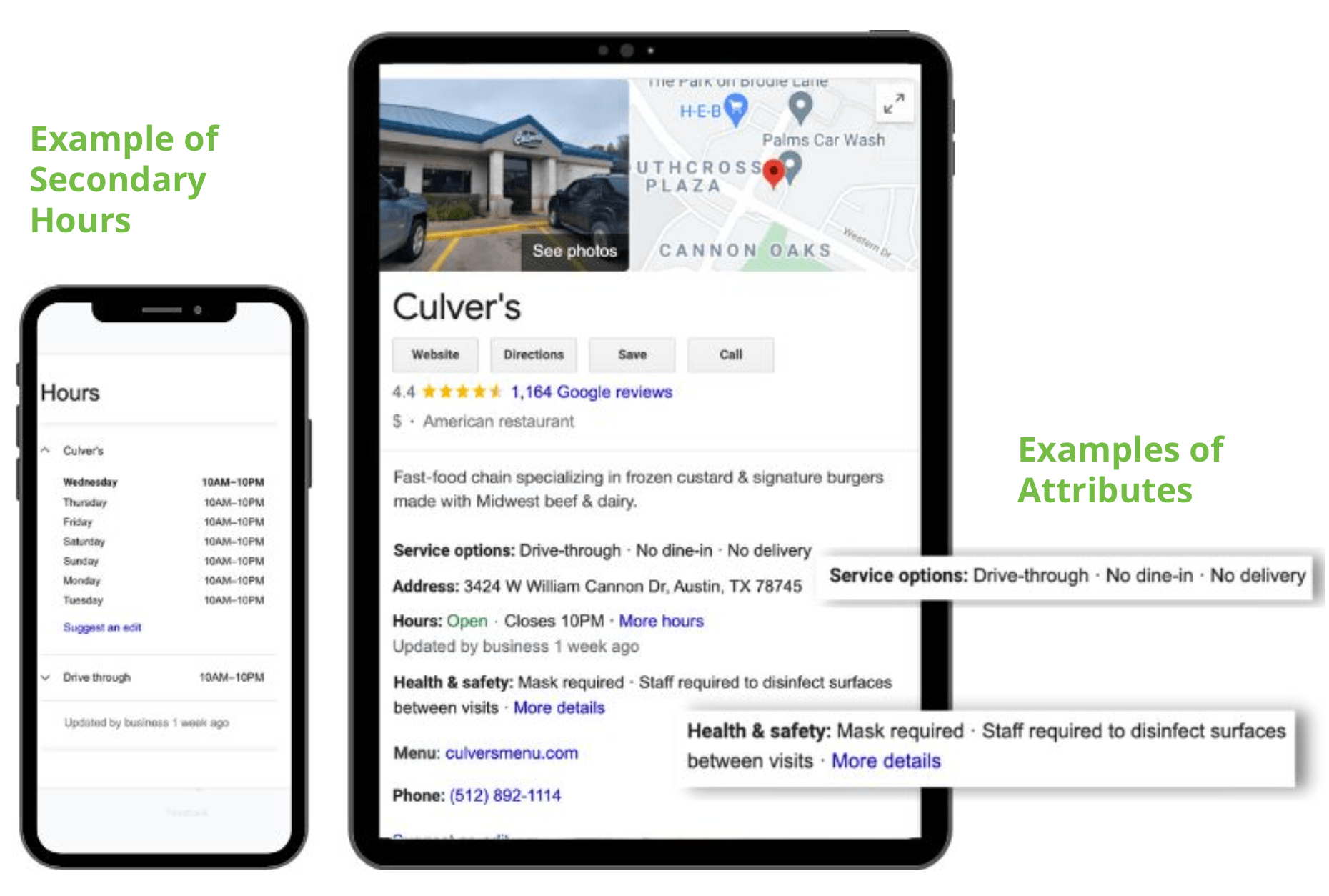
7. Leverage Google Posts Effectively
IS YOUR BUSINESS’S GOOGLE POST STRATEGY UP TO PAR?
Google Posts allow you to post directly from your local GMB profile and are a great way to make your profile stand out. Posts can include a photo, text, and, depending on the type of text, a CTA to your website. If you include a CTA, be sure to use a tracked link so you can measure the success of your local posts. Your posts will appear when someone searches your business’s name in Google Search or Google Maps. This will help further increase your visibility and show you’re putting effort into your local GMB profiles.
There are four key opportunities when multi-location businesses can use Google Posts:
- Promoting a product
- Highlighting an upcoming event
- Sharing a new feature
- Providing a special offer
In the past, Google posts would expire after seven days, but that is no longer the case. SEO experts have found Google posts that are months or even years old appear in businesses’ Knowledge Panels. With no expiration date, it’s more important than ever for your business to be investing in Google Posts, as seen below in the example with Stanley Steemer.
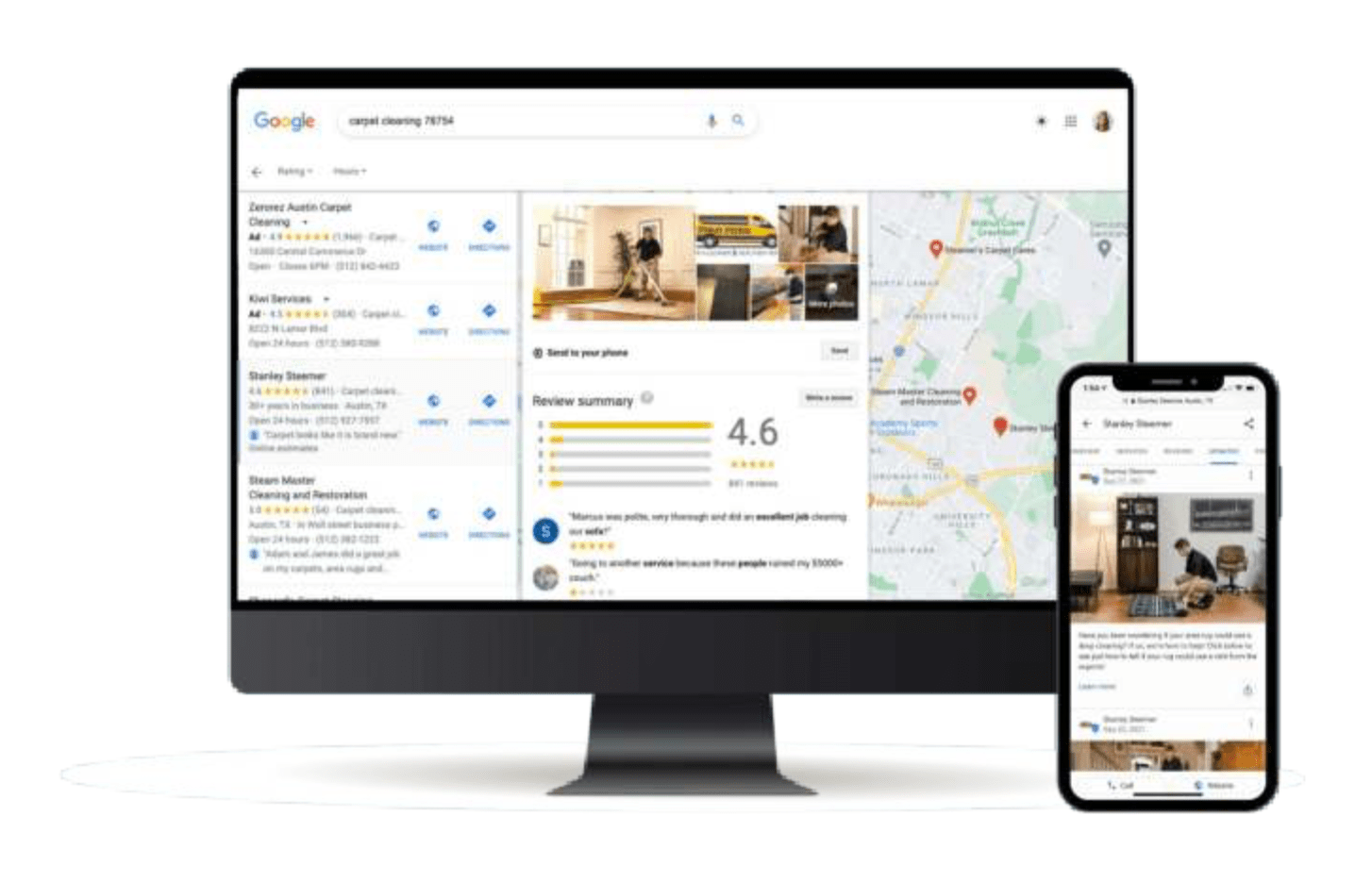
Example of Stanley Steemer’s Local Listings with Google Posts
8. Ensure Local Pages Are Optimized
LOCAL PAGES ARE A MUST FOR A STRONG SEO STRATEGY
Ninety-one percent of consumers start a local search when looking for a business, and having local pages ensures that your individual business locations appear in relevant search results. The value of increased online visibility goes far beyond more consumers having eyes on your local business. Local pages provide consumers with the convenience they’re looking for, and keeping consumers happy brings business right to your doors. Optimized local pages lead to increased revenue, which every multi-location marketer strives to achieve.
When it comes to optimizing your local pages, consider the following tactics:
- Develop a keyword strategy and include relevant keywords on your local pages.
- Keep brand consistency in mind when it comes to design and strategy.
- Place direct calls to action on your local pages.
- Include location-specific details, like interior and exterior photos, along with an updated
name, address, embedded map, and phone number. - Include a detailed description of your business to help boost your local page’s SEO.
- Incorporate Schema markup onto your local pages. Schema markup helps Google understand the value in a website’s content and ensures that important local content is appropriately indexed.
9. Run a Competitive Audit To Know How You Rank
FIND OUT HOW YOU COMPARE TO THE COMPETITION
A competitive audit can help your multi-location business better understand how it stacks up against the competition. This audit will provide insight into which areas your competitors are performing better than you, and vice versa. For instance, your competitors might already have optimized local pages and a strong reputation management strategy, which are areas your business may be lacking, or vice versa. On the other hand, if you know your business is the only one leveraging Google Posts, you may realize this is a differentiator helping your business crush the competition.
10. Track Performance and Make Adjustments
OPTIMIZE YOUR LOCAL SEO EFFORTS AND BUILD SUCCESS
While implementing all of the tactics mentioned throughout this guide is essential, you won’t be able to understand how effective they are without tracking performance. It’s important to set goals ahead of time and take note of your starting metrics to see how much progress your business makes. Tracking metrics can range from, but should not be limited to:
- Engagement rates on local social content
- Click to calls on a CTA on local listings
- Conversion rates on local pages
- New leads gained through listings or website visits
Pro tip:
Once you have these tracking metrics in place, let them run for a month or quarter, you can analyze your findings and make informed optimizations based on performance.
In Summary
DOMINATE YOUR LOCAL SEO STRATEGY TODAY!
Changes in digital marketing and the consumer journey are here to stay. Google and other search engines are constantly updating and evolving. It’s important to stay informed about those changes and adjust your local SEO strategy accordingly. Following the steps mentioned above will significantly improve your business’s local SEO and increase visibility on Google. More eyes on Google and other local search platforms means more potential customers and ROI.
Important Note:
While other platforms typically offer fewer optimization opportunities when compared to Google, many of the optimization strategies recommended in this guide can be applied to Google, Yelp, and elsewhere.
Need more convincing on the necessity of local SEO? The data speaks for itself:
93% of US consumers in 2020 searched online to find local businesses
80% of SERP traffic clicks on the Google 3-Pack results
50% of consumer searches now include local intent
Source: www.meetsoci.com